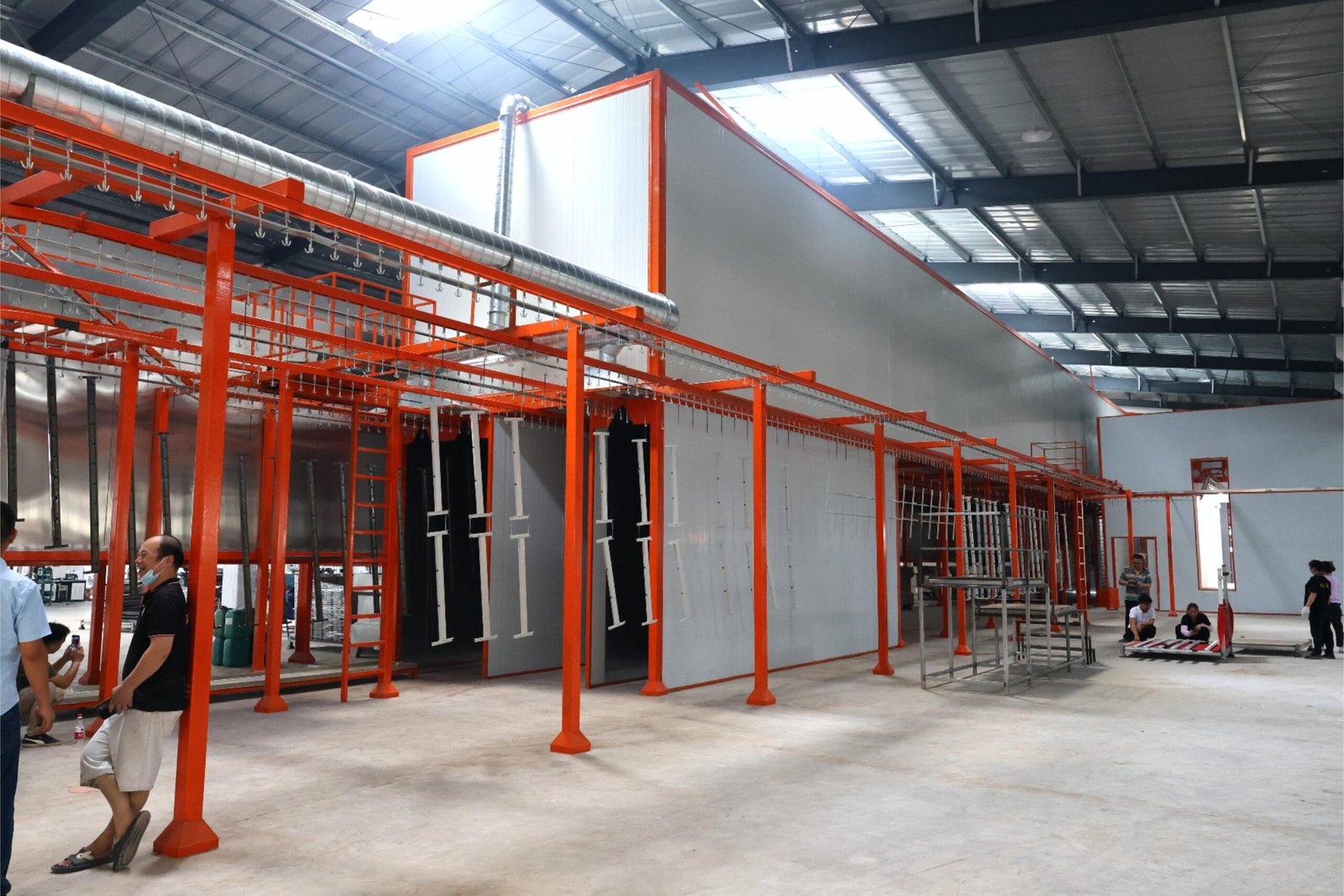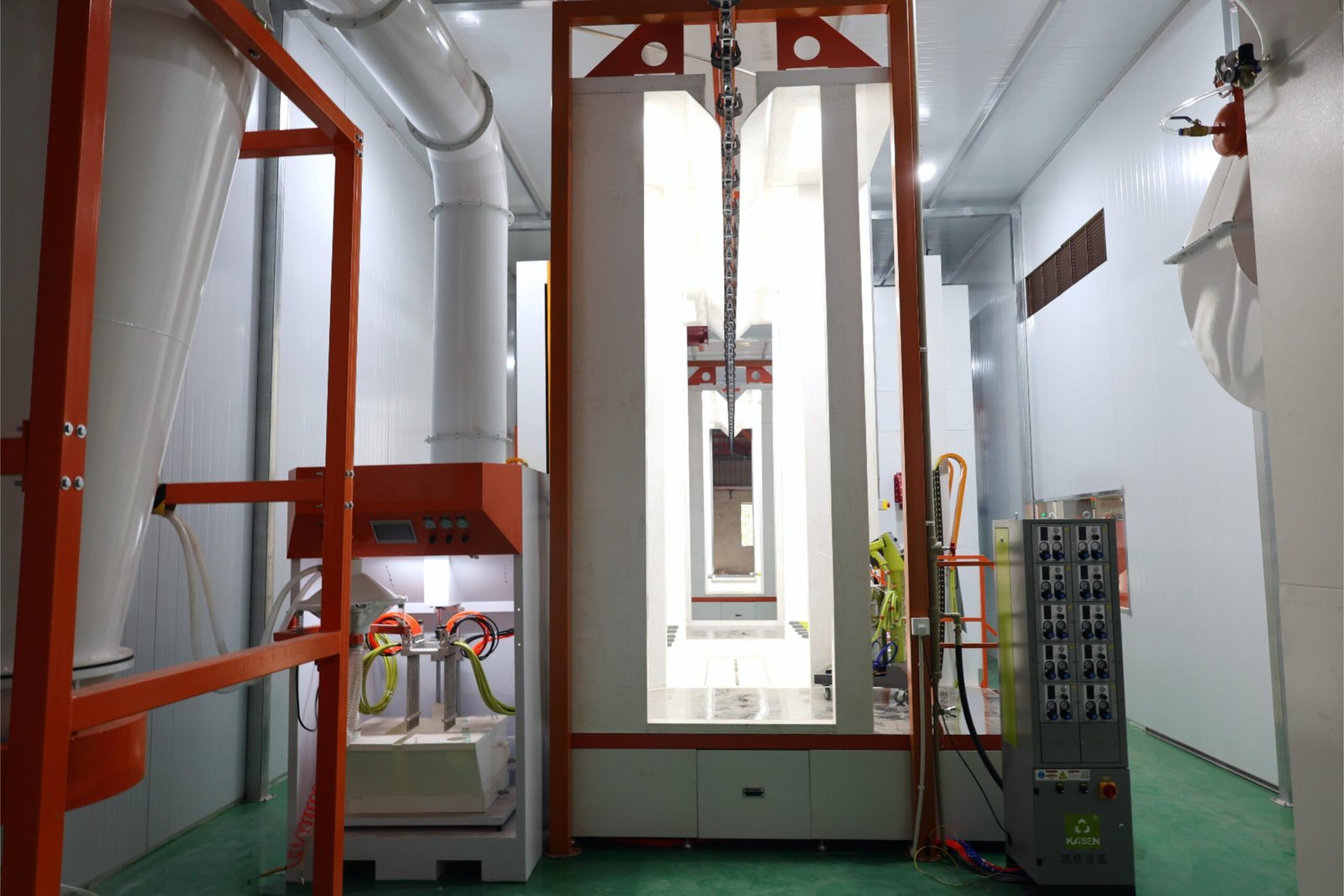How Do You Ensure Proper Grounding in the Powder Coating Process?

Grounding problems can silently destroy your powder coating quality—how do you make sure your system is always grounded right?
To ensure proper grounding in the powder coating process, we must clean and prepare the substrate, use conductive hooks and racks, test grounding resistance regularly, and maintain clean, secure connections.
It’s one of the most overlooked parts of powder coating—but also one of the most critical. Let’s walk through it step-by-step.
Why is grounding so important in powder coating?

Poor grounding leads to wasted powder, coating defects, and safety hazards.
Grounding enables electrostatic attraction between powder and substrate. Without it, powder won’t stick, defects appear, and static discharge risks increase.
Improper grounding causes common problems like:
- Uneven coverage and missed spots
- Orange peel textures or pinholes
- Rejected batches and rework costs
- Higher risk of sparks or fire when flammable powders are used
From safety to finish quality, grounding is not optional—it's fundamental.
What are the different ways to ground parts?

Different parts and production lines need different grounding strategies.
Common grounding methods include grounding rods, conductive straps, and clamps—each providing a path for electrostatic charge to safely flow to earth.
| Grounding Method | Description | Best Use Case |
|---|---|---|
| Grounding Rods | Metal rods driven into earth | Permanent outdoor setups |
| Grounding Straps | Flexible conductors made of copper or aluminum | For irregular parts or rotating jigs |
| Grounding Clamps | Secure metal clamps that grip part or rack | Fast setup for repetitive jobs |
Each method has pros and cons depending on your production setup. The goal is always the same: ensure low-resistance connection from substrate to earth.
How should you prepare parts before grounding?
Coating only sticks well to a clean, conductive surface.
Surface prep is vital—grease, rust, or insulating layers block electric current and prevent powder adhesion.
Clean your parts using:
- Degreasers for oils and fingerprints
- Sandblasting for rust or old coatings
- Alcohol wipes for sensitive items
Avoid applying primers or coatings before grounding unless they’re designed to be conductive. Always test conductivity after cleaning and drying.
Why are hooks and racks essential for grounding?
Hooks and racks aren’t just for holding parts—they carry the electrical charge too.
Conductive hooks and grounded racks transfer the electrical path from your power supply to the substrate’s surface.
To ensure they work:
- Use metal (steel or copper) components
- Keep them clean and uncoated
- Sand or file contact points regularly
- Replace bent or oxidized hooks often
Proper hook placement also affects finish. Use designs that avoid shadowing and ensure full coverage while maintaining ground contact.
How do you maintain grounding equipment?
Over time, powder, grease, and wear reduce conductivity.
Grounding equipment should be inspected and cleaned routinely to prevent hidden failures.
Weekly checklist:
- Clean powder off hooks, racks, and clamps
- Tighten loose clamps or connectors
- Remove rust or oxide buildup with sandpaper
- Replace worn-out ground straps or frayed wires
Neglecting equipment leads to inconsistent coatings and increased defects. Maintenance protects both product quality and team safety.
How do you test if grounding is effective?
You can’t see grounding—but you can (and should) measure it.
Use a multimeter to check resistance between the part and ground. Anything over 1 megaohm indicates poor grounding.
How to test:
- Touch one probe to the hook or clamp.
- Touch the other probe to the far end of the part.
- Ensure reading is under 1 megaohm (ideally under 500k ohm).
Other signs of poor grounding:
- Powder spraying off the part instead of sticking
- Weak wrap-around effect
- Sparking or arcing at contact points
Test at the start of each shift and any time parts are switched out.
What role do environmental factors play?
Humidity, temperature, and even air pressure affect electrostatics.
High humidity can reduce charge retention. Extreme cold can make grounding cables brittle. Dust or oil vapor can insulate surfaces.
To manage this:
- Use dehumidifiers if RH > 60%
- Clean work zones of airborne oil mist
- Insulate high-voltage cables in cold months
- Use anti-static flooring and conductive shoes
Always adapt your grounding protocols to your local conditions, especially in seasonal or outdoor production setups.
How can you train your team for consistent grounding?
The best equipment means nothing if your team doesn’t use it correctly.
Every operator should know how to verify grounding, clean contact points, and recognize signs of failure.
Include in your training:
- Visual signs of poor powder adhesion
- How to test resistance with a multimeter
- How to clean hooks and clamp contacts
- Safety protocols for high-voltage equipment
A small investment in training pays big in reduced defects and better overall safety.
Conclusion
Proper grounding ensures your powder coating line runs safely, efficiently, and produces beautiful, defect-free results—every single time.
